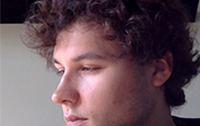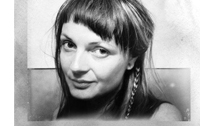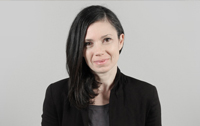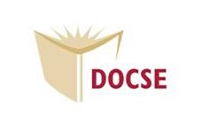
Category Archives: Affiliates


Nima Navab
Since his years at Ontario College of Art & Design studying Environmental Design, Nima Navab has become increasingly focused on spatial design, and more specifically, examining the role of art and technology in enhancing both intimate and large-scale public interactions. Through a variety of mediums and means, Nima investigates the various roles humans play in shaping both the ecological, political and sensorial landscapes of our built environment. His increased attention to everyday spatial interactions has brought to light the importance of field research, discussion and collaboration with those occupying the space as well as the space itself, highlighting the importance of spatial experience and theoretical research, both which continue to form the basis of his creative process. He is currently an active member at the Topological Media Lab, and working as a research assistant for Carmella Cucuzzella, examining the emerging aesthetics of sustainability, in today’s architectural competitions.

David Somiah Clark
David Somiah Clark is a Montréal based composer and performer with a professional background in audiovisual systems integration. Working as a consultant, he has designed and integrated solutions for clients including the Canadian Space Agency and CAE Healthcare. His compositional work can be heard in his collaboration with the Montréal electroacoustic band Pang Attack. Currently completing a B.F.A. in Computation Arts, David’s research involves exploring ways in which technologically mediated communication may confuse arbitrary boundaries between living and non-living systems and enrich our ecological experience.

Elysha Poirier
Elysha Poirier is a visual artist, designer and illustrator working in various forms of new media. Her techniques in painting and design have been adapted to video for live performance. This includes experiments in stop-motion animation, and translating the essence of painterly techniques into a digital environment. Elysha has produced several installations and has engaged in live performances locally and abroad. She has performed with a diversity of artists stemming from experimental music, film and dance.
Her work has been described as organic and playful and embraces strong relationships to sound, design, and movement. As an image collector, Elysha has been accumulating an ongoing reserve of image libraries – often collected from nature, society, and her own personal experiments in graphics, shapes and illustrations.
Elysha holds a diploma in graphic design. Her love of design has given her a natural eye for composition and arrangement of imagery both in static and moving applications. She has taught various workshops, runs her own freelance business: Peartree Design, and is presently a Technology Strategist for Zata Omm’s Dance and Technology Research Lab, funded by the Metcalfe Foundation.

Oana Suteu Khintirian
Oana Suteu Khintirian’s work encompasses films, installation and media scenography. A professional filmmaker and editor for two decades her work focuses on movement as well as on the human body and its correlation with the environmental elements, structures and dynamics. Oana’s films have screened in international film festivals around the world and she participated in exhibitions at the Museum of Contemporary Arts, Montreal, Kunstlerhaus Mousonturm, Frankfurt and Image Forum, Tokyo, among others. She received prizes from ArtFIFA, Montreal, Moving Pictures in Toronto, Golden Prague and a Prix Italia for Creativity. She has equally been nominated by the Canadian Academy of Cinema and Television for direction and editing. She is currently working on a highly personal project that deals with paper and memory. She lives and works between Montreal and Paris.

CIRMMT
CIRMMT is a multi-disciplinary research group centred at the Schulich School of Music of McGill University. It unites researchers and their students from three Quebec institutions – McGill University (Faculties of Music, Science, Engineering, Education and Medicine), l’Université de Montréal (Faculté de musique, Faculté des arts & des sciences), and l’Université de Sherbrooke (Faculté de génie). The CIRMMT community also includes administrative and technical staff, research associates, visiting scholars, musicians, and industrial associates. CIRMMT occupies a unique position on the international stage having developed intense research partnerships with other academic and research institutions, as well as diverse industry partners throughout the world.
The CIRMMT community is interested in interdisciplinary research related to the creation of music in the composer’s or performer’s mind, the performance of music, its recording and/or transmission, and the reception of music by the listener. It is also interested in the ways in which vision, haptics and touch interact with music and sound. CIRMMT seeks to develop innovative approaches to the scientific study of music media and technology, to promote the application of newer technologies in science and the creative arts, and to provide an advanced research training environment.

the Cognitive Sciences Institute of UQAM
Founded in 2003, the Cognitive Sciences Institute of UQAM constitutes a multifaculty unit under the faculties of Social sciences and of Sciences; it is also multidepartmental. It is intended to promote research and skills development in the field of cognitive sciences. The CSI is made up of researchers whose areas of expertise cover practically the entire field. It acts as a point of convergence for the activities of existing research teams and is also open to their external partners.
Four research clusters have been defined that create links between, and structure, the members’ research programs. Coordinating activities in dynamic clusters also favors the recruitment of students and ensures that they receive an integrated education in cognitive sciences.

The Dream & Nightmare Laboratory
The Dream & Nightmare Laboratory, established in Montreal’s Sacré-Coeur (Sacred Heart) Hospital in 1991, is dedicated to the scientific study of dreaming and its disorders, to the training of graduate students, researchers and health professionals in the techniques and applications of dream science, to the development and deployment of proven methods for treating dream-related health problems, and to public education about the important role dreams and nightmares play in psychological life.

District3 Vision
Our mission is to create an ecosystem for bridging the gap between academia, industry and government, and to leverage the underlying potential available to materialize radical innovations.
The common misconception of innovation is to often confuse it with invention and to believe that it’s the creation of a new product. The sole definition of innovation is the creation of those better or more effective products, processes, services, technologies or ideas that are accepted by markets, governments, and society.
The value of Innovation comes from the creation of new products and services. Experts agree that the innovation process generates economic growth and a sustained competitiveness; it creates value out of knowledge and/or out of inventions from research. But it is a complex process requiring the alignment and drive of the many different actors and stakeholders of the ecosystem it is to bring benefits to.
[youtube]http://www.youtube.com/watch?v=IW0JKrWLNJ8&feature=youtu.be[/youtube]

David O’Brien Centre for Sustainable Enterprise
Named after benefactor David O’Brien, Chairman of RBC and Encana, the David O’Brien Centre for Sustainable Enterprise was inaugurated in November 2009. Paul Shrivastava, the Centre’s director, spearheads the Centre’s efforts to be the leader in developing business practices that support corporate social responsibility, environmental health and safety, environmental management, community, and greening activities.
The David O’Brien Centre for Sustainable Enterprise (DOCSE) focuses its efforts on guiding organizations toward holistic sustainable strategies that are rooted in innovation and enterprise development.
The Centre is committed to:
- advancing scholarly research endeavors
- creating world-class teaching and learning opportunities
- developing community outreach initiatives
